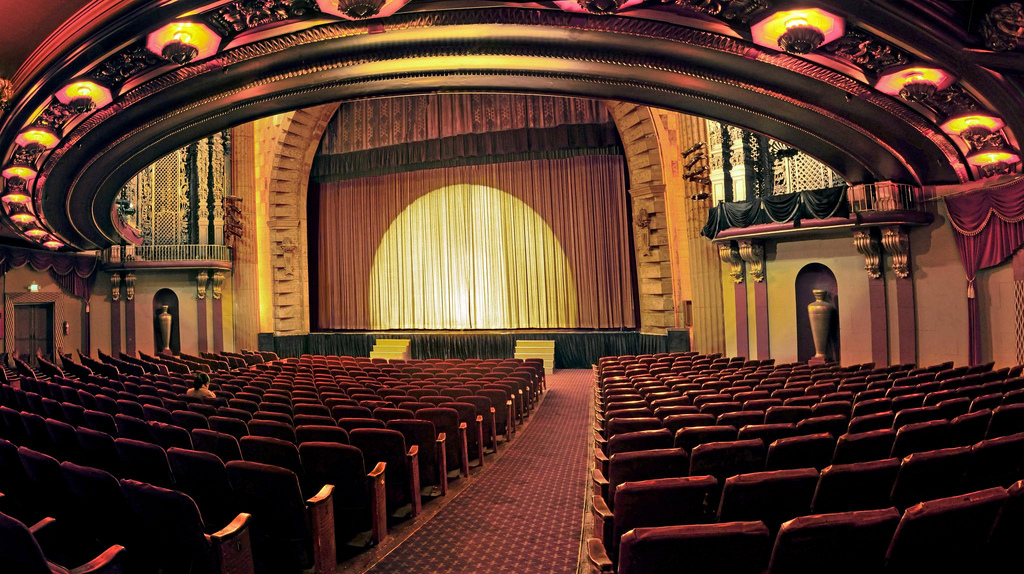Million Dollar Theatre

Latest News – 2nd July 2019
Earlier this year Langdon Street Capital, owners of the Million Dollar Theatre, submitted an application seeking Historic-Cultural Monument status for the theatre. The application was supported in-person by LAHTF. Representatives from the Cultural Heritage Committee toured the theatre, and subsequently the committee recommended the City Council grant the application. At the City Council meeting on 2nd July all council members present voted in favor of the application.
Latest News – 8th June 2019
It was announced at the 8th June “Last Remaining Seats” screening at the Million Dollar that CoBird is no longer the tenant of the theatre. LAHTF is currently supporting the recent Historic-Cultural Monument application by the owners, Langdon Street Capital, and continues to work with them to find a suitable tenant for this historic theatre.
Latest News – February 2018
Happy 100th birthday to the Million Dollar Theatre! On February 1, 1918, the Million Dollar Theatre opened with the premiere of William S. Hart’s film The Silent Man. Today the Million Dollar Theatre is closed temporarily while the new tenants, CoBird, finalize their plans – see “Advocacy Issues” below, for more details.
Latest News – December 2017
LAHTF has met with leaders of CoBird, the new tenants at the Million Dollar theatre, and CoBird have expressed a desire to activate the theatre for public events on a regular basis. They will also be putting in a substantial amount of money on renovations. There are still many details to be worked out, and LAHTF will continue to work directly with the new operators as plans move forward.
LAHTF’s understanding is that CoBird also holds the lease on the large basement under the theatre, and the retail stores along Broadway, including the former optometrists that was originally the Million Dollar theatre exterior lobby space. It is still unclear how all of these additional spaces will be used.
About the Million Dollar Theatre
The Million Dollar Theatre was the first movie palace on Broadway, built in 1917 by Sid Grauman and opened in 1918. At 2,345 seats, it was the largest theatre on Broadway at the time, and had one of the largest stages west of Chicago. The building was designed by Albert C. Martin, with William Lee Woollett designing the theatre. It was the first movie theatre to break with generally classic design conventions and use fantasy themes throughout; the interior features a mix of Egyptian, Roman, Spanish and American Western elements.
The building is a stunning example of the Churrigueresque style, which can also be seen in San Diego’s Balboa Park Exposition buildings. The façade features eight Muses of the Arts along with symbols of western Americana such as bison heads, eagles, and longhorn steer skulls, all sculpted by Joseph Mora.
The theatre’s interior presents a fantasy theme and celebrates the allegorical children’s story “The King of the Golden River” by John Ruskin, a Victorian classic which would have been as familiar to theatre-goers 100 years ago as “Alice In Wonderland” is to modern day patrons. Interior decoration included bison heads on the balcony front facing the stage (all since removed), many other characters from the book, and a centerpiece atop the proscenium representing one of the story’s main characters “Esquire”, the Southwest Wind.
Despite being specifically designed as a movie theatre, full stage facilities were included when the theatre was built. This allowed Sid Grauman to stage spectacular prologues prior to each movie screening, a precursor to his lavish productions staged at his later theatres such as the Egyptian theatre in Hollywood.
A small 2 manual, 7 rank Wurlitzer organ was originally installed in the theatre but was superseded in late 1918 by a larger 2 manual, 16 rank Wurlitzer. Although the organs are now gone (the original transferred to the Rialto theatre on South Broadway), huge plaster organ grilles in the style of Spanish Colonial altar screens, painted to look wooden, still flank the proscenium arch.
A novel feature of the theatre was its projection booth located at the center front of the balcony. The much shorter throw distance than projecting from the rear of the balcony, combined with simpler optics (no keystone correction was required), resulted in a picture much brighter than in other movie theatres, a feature Sid Grauman did not hesitate to use to help sell his new theatre. That said, the loss of prime center balcony seats impacted ticket sales and the balcony center projection concept was not seen in many, if any, other theatres.
Grauman sold the Million Dollar in 1924 to focus his attention on Hollywood and the Egyptian and Chinese theatres. The new owner, Paramount, closed the theatre in 1930 owing to the Great Depression. Metropolitan Theatres took over in 1945, and by 1950 instituted a policy that the Million Dollar exclusively entertain Spanish-speaking audiences. In the 1960s the lobby area was modernized, a drop ceiling fitted, and the grand double-height murals on either side of the lobby covered-up. As of 2018 the murals still exist behind the false lobby walls.
Metropolitan closed the theatre in 1993 and a church took over the lease for 5 years. The church later moved to the State Theatre, seeing the Million Dollar shuttered until 2005 when it was leased by former nightclub owner Robert Voskanian and re-opened in 2008 for special events, concerts, and movie screenings. Business was intermittent and Voskanian relinquished the lease in 2012. Since then the theatre has been used for filming, occasional one-off events, screenings, and has been a featured venue at Night On Broadway. As of late 2017 the Edison Building, the theatre, and Grand Central Market were sold to real estate investment company Langdon Street Capital.
Photo by Wendell Benedetti



